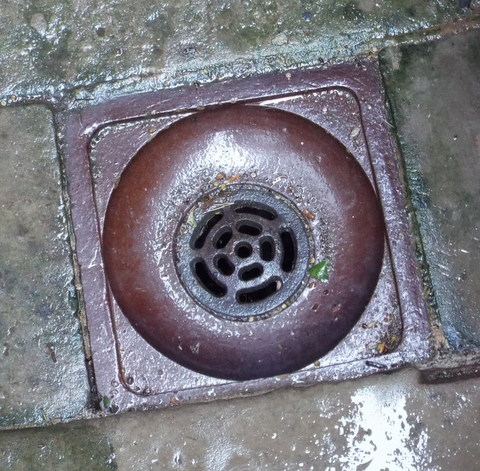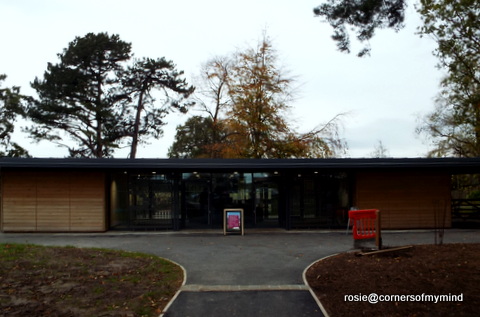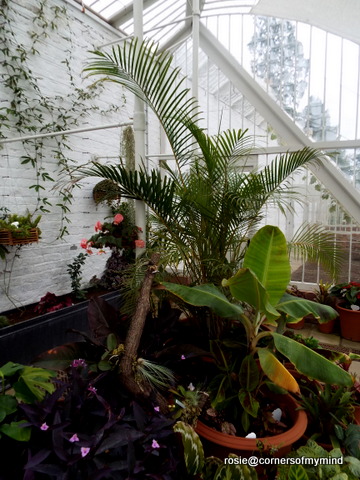It's nearly the end of October so I'm joining in with Hawthorn at I live, I love, I craft, I am me blog with this month's Photo Scavenger Hunt.
The words for October are
Making
Empty
Starts with an F
Paper
Neat
Street
Kettle
Unexpected
Vase
My Own Choice
************
Making - Banana Bread, a recipe from my old BeRo book. It's a good recipe for using up old ripe bananas, it has walnuts in the mixture too and is definitely a cake rather than bread. Lovely with afternoon tea.
Making - Banana Bread, a recipe from my old BeRo book. It's a good recipe for using up old ripe bananas, it has walnuts in the mixture too and is definitely a cake rather than bread. Lovely with afternoon tea.
Empty - a clean, empty drain under the steps up to 13 Oak Cottages, the worker's cottage at Quarry Bank Mill, Styal, Cheshire.
Starts with an 'F' - Fungi and Fly Agaric spotted at Trentham Gardens early in October.
Paper - Also at Trentham Gardens a paper notice pinned to a board near where Georgina the gardeners' black cat has her little house. She was adopted by the workers there and was always on hand to greet visitors who made it up to the top of the Italian Gardens near the ruins of the old house. She has been taken home by one of the gardeners so that she can enjoy her old age in peace and quiet.
Starts with an 'F' - Fungi and Fly Agaric spotted at Trentham Gardens early in October.
Paper - Also at Trentham Gardens a paper notice pinned to a board near where Georgina the gardeners' black cat has her little house. She was adopted by the workers there and was always on hand to greet visitors who made it up to the top of the Italian Gardens near the ruins of the old house. She has been taken home by one of the gardeners so that she can enjoy her old age in peace and quiet.
Neat - a preening Egyptian Goose on the JCB lake near Rocester, it will soon be looking neat and tidy.
Street - Rosslyn Road in Longton lit by morning sunlight. The building just behind the wall is the library.
Kettle - more than one kettle in a display at a kitchen shop in Bakewell. I think one of these would last for ages. We use a Le Creuset cast iron casserole which was given us as a wedding present 38 years ago two or three times a week.
Street - Rosslyn Road in Longton lit by morning sunlight. The building just behind the wall is the library.
Kettle - more than one kettle in a display at a kitchen shop in Bakewell. I think one of these would last for ages. We use a Le Creuset cast iron casserole which was given us as a wedding present 38 years ago two or three times a week.
Unexpected - last week when I pulled up the blind on the landing window I spotted the above scene. What on earth? We get squirrels and foxes in the garden plus cats but non of them would have caused that amount of destruction and anyway they all jump over the fence if they have to. There were claw marks on some of the shattered pieces of wood and a latrine hole in one of the raised beds. Got to be a badger, Bad badger! There are tons of ways in and out of the garden but you had to fight your way through a solid fence, we've mended the fence but left the runs for now as we don't want the fence to be broken again.
Vase - a vase of flowers at Whightwick Manor near Wolverhampton taken earlier this year when we met friends there for a visit and lunch.
My Own Choice - another goose just because I like them. This one is a Barnacle Goose, one of many at the JCB lake at Rocester.
Vase - a vase of flowers at Whightwick Manor near Wolverhampton taken earlier this year when we met friends there for a visit and lunch.
My Own Choice - another goose just because I like them. This one is a Barnacle Goose, one of many at the JCB lake at Rocester.
Click on the link below to find other bloggers who are joining in this month.





























































